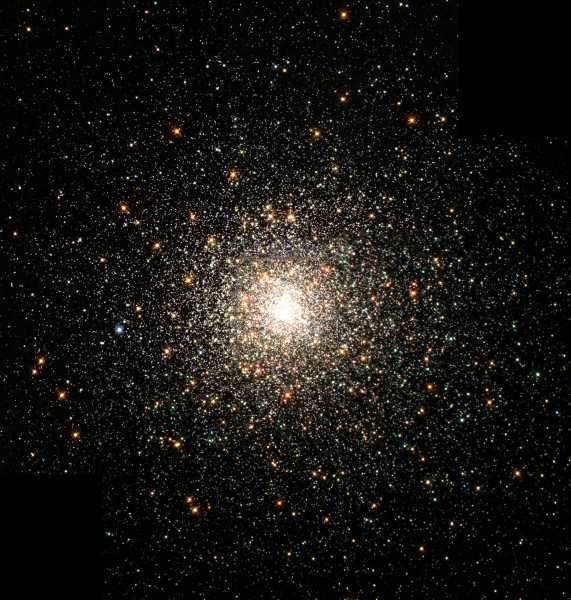

Finding the best ways to do good. Made possible by The Rockefeller Foundation.
Radio signals from deep space — and a controversial interview by a Harvard astrophysicist — have people wondering, once again, whether or not we’re alone in the universe.
First, a new investigation published in Nature looked into fast radio bursts, an astronomical mystery that some have argued might be artificial in origin. We detected the first fast radio bursts in 2007, but new technology has allowed us to detect many more of them, and confirm that some repeat themselves. The origin of these repeating signals is unknown, leading some scientists to speculate aliens could be sending them.
A few days later, Harvard professor and chair of the Harvard astronomy department Avi Loeb argued in a new interview that the interstellar object Oumuamua, which passed through our solar system in 2017-2018, might be a solar sail made by some ancient civilization.
Join the Vox Video Lab
Go behind the scenes. Chat with creators. Support Vox video. Become a member of the Vox Video Lab on YouTube today. (Heads up: You might be asked to sign in to Google first.)
Every time we discover unexplained phenomena in deep space, people wonder: Is this, finally, a sign of aliens? There are strong reasons to conclude these phenomena are natural in origin. But some scientists — Loeb chief among them — insist we’re too quick to dismiss the possibility of aliens.
Much of the disagreement appears rooted in different priors about how common life is in the universe. Scientists who think that space ought to be teeming with alien life will find aliens to be the likeliest explanation for a wide variety of astronomical phenomena; scientists who believe we’re probably alone out there will interpret the same data differently.
But the debate is more than just pointless, fun speculation. Some inferences we can make from the search for aliens have profound implications for our own world. In particular, some people worry about whether civilizations like ours inevitably wipe themselves out — and wonder if looking out at the universe can give us a sign of what’s ahead.
If there’s life out there, it’s obscure, distant, and hard to detect. A super sophisticated, technologically advanced alien civilization would likely leave more reliable traces. For example, a civilization that has enjoyed millions more years of technological innovation than humans might be building Dyson spheres (a massive structure that encloses a star to use it as a power source) and sending far more systematic and identifiable signals and probes with the power they produce. It’s difficult to guess what exactly they’d do, but it’s very unlikely their actions would leave no mark on the universe.
The traces we have observed so far aren’t anywhere near the kind of evidence that would prove an extraterrestrial civilization exists. That means there might be hard-to-foresee hurdles that prevent advanced galactic civilizations from developing, or that destroy such civilizations before they reach a size such that they can reach out. Or it might just mean life itself is a spectacular coincidence.
Fast radio bursts: natural phenomena or signals from aliens?
A fast radio burst is a sudden pulse of radio waves, detectable by our telescopes and originating in deep space. They are typically about a millisecond long. The first fast radio burst was discovered in 2007. In the 12 years since, we’ve picked up a few dozen more, but not enough to be able to put together a compelling theory of what they are.
That may change quickly with a new telescope that just began operating in the summer of 2018. The Canadian Hydrogen Intensity Mapping Experiment (CHIME), run by the Canadian National Research Council’s Dominion Radio Astrophysical Observatory along with the University of British Columbia, McGill University, and the University of Toronto, was designed for research about the early universe (it can map the density of interstellar hydrogen) and it turned out to be exceptionally well equipped to detect FRBs.
The Nature paper, authored by the CHIME/FRB Collaboration, reports the first results from FRBs observed with CHIME. The telescope is not yet fully operational, and it still observed 13 FRBs in the space of just two months when it started operations — a significant addition to our understanding of the phenomenon, as we previously had only about 50 or 60 examples since 2007. CHIME also observed the second-ever repeating burst, and the lowest-frequency bursts yet known.
We don’t yet know much about what causes FRBs. More grounded speculation among astrophysicists is that they’re caused by neutron stars, stars merging, or black holes. Until the first repeating signals were found, one theory was that they were caused by catastrophic events of some kind — a star going supernova, for example. But since the signals have now been confirmed to sometimes repeat, that can’t be it.
The theory that’s caught hold of the public imagination is that they’re caused by intelligent alien life. A study by Avi Loeb and Manasvi Lingam of Harvard University, published in 2017, argued that the patterns could plausibly result from transmitters designed to drive interstellar light sails. The paper is theoretical; it doesn’t propose any evidence for the “aliens” hypothesis, just argues that it’d be compatible with the recorded data so far. They conclude it’d be physically possible to build such a transmitter — at least, if you had a solar-powered, water-cooled device twice the size of Earth.
The hypothesis raises some obvious questions. FRBs come from all over space, not just from one particular region of it. Are we to assume that these aliens are sophisticated enough they’ve spread across many galaxies, but that there are no signs of them other than these energy bursts? Or that many civilizations independently settled on the same odd style of energy burst?
The paper argues for the latter possibility: that many civilizations separately have built such massive transmitters and are sending out FRBs. “The latest estimates suggest that there are ∼ 10^4 [10,000] FRBs per day”, the paper observes, which would suggest an implausible number of extremely busy scattered alien civilizations. To resolve that, the paper argues that perhaps “not all FRBs have an artificial origin — only a fraction of them could correspond to alien activity.” But once we concede that FRBs can occur naturally, and conclude that at least some of them are occurring naturally, why conclude that any of them are artificial?
And if a civilization had the astounding technical capacities to build solar-powered, planet-sized transmitters, wouldn’t it be doing other things we could detect, and which were less ambiguous?
“The possibility that FRBs are produced by extragalactic civilizations is more speculative than an astrophysical origin,” the paper concedes.
Is Oumuamua an alien object?
In 2017, we spotted Oumuamua, an interstellar object on a tumbling trajectory that took it into our solar system and around the sun. Oumuamua was traveling exceptionally fast — twice the speed of the Voyager 1 probe. It slingshotted around the Sun, briefly passed within range of Earth’s telescopes, and vanished back into space.
The speculation about it started in earnest when scientists noticed it had slingshotted around the sun faster than should have been possible. The likeliest explanation is that, like a comet, it lost mass as it went around the Sun, increasing its velocity. We’ve been surprised by the trajectories of objects in space before, with no aliens involved. Sometimes our calculations are just slightly off.
But researchers studying Oumuamua — including Loeb — courted controversy and attracted fascinated media attention when they mentioned in their paper that Oumuamua could instead be artificial in origin, and may even be a solar sail.
What’s a solar sail? My colleague Brian Resnick covers that in a piece on Oumuamua:
In an interview with Haaretz published Monday, Loeb doubled down on his view that the “aliens” interpretation of Oumuamua is plausible. Many scientists agree with him, he argues, and are too nervous about their reputations to say so: “The article I published was written, in part, on the basis of conversations I had with colleagues whom I respect scientifically. Scientists of senior status said themselves that this object was peculiar but were apprehensive about making their thoughts public.”
Of course, many other scientists disagree with him. “You can fit [Oumuamua’s movement] with a straightforward comet-like object,” Michele Bannister, an astronomer who studied Oumuamua at Queen’s University Belfast, told the Verge when Loeb and Bialy’s paper first came out. A Nature article last fall made the case that Oumuamua is perfectly explainable as a comet. Comets are vastly more common than extraterrestrial solar sails, making them the likeliest explanation.
In fact, while Loeb argues he has more allies in private, most articles with headlines touting scientists who say it might be intelligent aliens turn out to be articles in which Loeb is the scientist in question — which might be leaving readers with the impression that there are more scientists on the “aliens” side of the argument than there really are.
That’s not to suggest that Loeb is unqualified or on the margins of his field: he’s a professor of astrophysics at Harvard, founding director of Harvard’s Black Hole Initiative, and director of the Board on Physics and Astronomy of the National Academies. But on aliens, his stance is hardly the consensus.
The broader debate over alien life
As the Oumuamua case makes clear, scientists disagree about how to interpret these phenomena in large part because they disagree about how plausible alien life is in the first place. In statistical terms, they have different priors, meaning that the background assumptions they are using to interpret the new evidence are different.
From one perspective, the universe is astonishingly large, full of habitable planets like Earth where life could evolve like it did here. Sometimes, that life would become intelligent. We’d expect such a universe to have lots of flourishing civilizations — as well as lots of extinct ones.
This is clearly the expectation that motivates Avi Loeb. “As soon as we leave the solar system, I believe we will see a great deal of traffic out there,” he said in the interview with Haaretz. “Possibly we’ll get a message that says, ‘Welcome to the interstellar club.’ Or we’ll discover multiple dead civilizations — that is, we’ll find their remains.”
Obviously, if you think that space is teeming with aliens, it’s not so much of a stretch to interpret astronomical phenomena as remnants of those aliens.
But if you’re looking at the same data with the expectation we’re alone in the universe, you’re much likelier to conclude that there’s a natural explanation for the fast radio bursts and Oumuamua.
It’s weird, given that the universe is so vast, that we seem to be alone in it. Physicist Enrico Fermi was the first to spell out this dilemma, and it’s named after him: the Fermi paradox. The paradox is that, under some reasonable assumptions about how often life originates and reaches technological sophistication, we should be able to detect signs of thousands or millions of other civilizations. And yet we haven’t. Recent investigations suggest that the paradox may have a mundane resolution — under more accurate assumptions about how life originates, we are very plausibly alone.
The disagreement between researchers who think that advanced civilizations must be extremely rare, and those who think that they’re common, is a fairly substantive one. For one thing, if advanced civilizations are common, then why can’t we see them? We might be forced to conclude that they’re fairly short-lived. That’s Loeb’s take: “The technological window of opportunity might be very small,” he told Haaretz. “Sails like these are launched, but they no longer have anyone to broadcast back to.”
That take would have some consequences for us. If there’s some danger ahead that destroys every technological civilization that runs into it, we might expect that we’re living in a “vulnerable world” where future technological advances will destroy us, too.
In that way, disagreements over aliens have big implications. But that’s probably not the reason everyone cares about them. As Resnick has observed for Vox, offhand speculation about aliens tends to get vastly more coverage than anything else in astronomy. Whether we’re alone in the universe feels like a profoundly important question, for its implications for human civilization but also for its own sake. The lack of evidence suggesting these phenomena are alien in origin won’t be enough to stop people from wondering.
Sign up for the Future Perfect newsletter. Twice a week, you’ll get a roundup of ideas and solutions for tackling our biggest challenges: improving public health, decreasing human and animal suffering, easing catastrophic risks, and — to put it simply — getting better at doing good.
Sourse: vox.com






